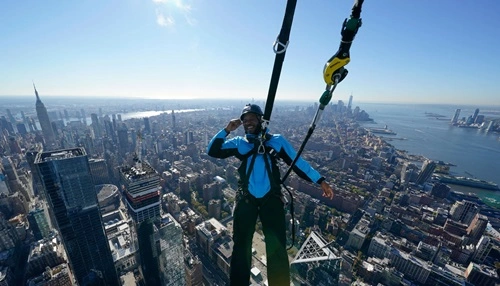Yes, in most cases, it is illegal to climb a building without proper authorization. Building climbing, often referred to as “buildering,” is generally considered trespassing and may also result in charges related to public safety, property damage, or creating a public disturbance. Laws regarding unauthorized climbing vary depending on the jurisdiction and specific circumstances, but penalties can include fines, community service, or even jail time.
Legal Issues Surrounding Building Climbing
1. Trespassing Laws
- Unauthorized climbing of private property, including buildings, typically constitutes trespassing. Trespassing is illegal in all states and can be charged as a misdemeanor or felony, depending on the circumstances.
- Trespassing penalties include fines ranging from $100 to $5,000 and possible jail time.
2. Endangerment and Public Safety
- Climbing buildings can endanger not only the climber but also the public. Falling debris or the risk of a climber falling can result in injury or property damage.
- Some states may impose additional charges, such as reckless endangerment, if the act creates a significant risk to others.
3. Vandalism and Property Damage
- If climbers cause damage to a building, such as scratching windows or damaging structural elements, they may face vandalism or criminal mischief charges.
4. Urban Climbing Stunts
- High-profile stunts, such as scaling skyscrapers, often lead to charges of disorderly conduct or creating a public nuisance, particularly if the act draws large crowds or disrupts public services.
Famous Cases and High-Profile Incidents
- High-Rise Climbers
- Urban climbers like Alain Robert, known as the “French Spider-Man,” have scaled iconic buildings worldwide without authorization. These stunts often lead to immediate arrest and legal action.
- In 2016, a climber scaled Trump Tower in New York City using suction cups, resulting in charges of reckless endangerment and trespassing.
- Social Media Influence
- The rise of social media has fueled unauthorized building climbs for viral content, leading to increased enforcement and harsher penalties.
Legal Climbing Opportunities
- Authorized Events
- Some buildings host authorized climbing events or allow professional climbers to scale their structures for promotional purposes. These events require prior permission and compliance with safety standards.
- Recreational Climbing Facilities
- Many cities have recreational climbing walls or outdoor climbing facilities that provide a safe and legal alternative to building climbing.
Why Building Climbing Is Dangerous
- Physical Risks
- Falling from even a moderate height can result in severe injuries or death. Building exteriors are not designed for climbing, making them unpredictable and unsafe.
- Legal Consequences
- In addition to facing fines and potential jail time, climbers may be held liable for any damage or injuries caused during the act.
- Emergency Response Costs
- Unauthorized climbing often requires emergency responders to intervene, and climbers may be billed for these services.
Penalties for Unauthorized Building Climbing
- Fines
- Fines for trespassing or endangerment can range from a few hundred dollars to several thousand dollars.
- Criminal Record
- A conviction for trespassing, vandalism, or public endangerment can result in a permanent criminal record, affecting employment and other opportunities.
- Restitution
- Courts may order climbers to pay restitution for damages caused during the climb, such as repairing property or compensating victims.
Steps to Avoid Legal Trouble
- Seek Permission
- Always obtain written permission from property owners or managers before attempting to climb a building.
- Join Climbing Communities
- Engage in legal climbing activities through gyms, clubs, or outdoor climbing events.
- Understand the Laws
- Research local trespassing and public safety laws to avoid unknowingly breaking the law.
Related FAQs
Q1. Can I climb my own building?
Ans: Yes, you can climb a building you own, but you must ensure it does not violate local safety ordinances or endanger others.
Q2. Is climbing abandoned buildings illegal?
Ans: Yes, entering or climbing abandoned buildings without permission is considered trespassing and may result in legal penalties.
Q3. Are there any states where building climbing is legal?
Ans: Building climbing is only legal with explicit permission from the property owner, regardless of the state.
Q4. Can you be arrested for climbing public buildings?
Ans: Yes, climbing public buildings without authorization can result in trespassing charges and additional penalties related to public safety.
Q5. What happens if I climb a building for a social media stunt?
Ans: You may face legal consequences, including fines, arrest, or civil liability for any damages or injuries caused during the stunt.
Conclusion
Climbing a building without authorization is generally illegal in the United States, as it violates trespassing and public safety laws. While some individuals engage in this activity for thrill-seeking or social media content, the legal and physical risks are significant. For those interested in climbing, pursuing legal avenues such as rock climbing gyms or authorized climbing events is the safest and most responsible choice.


